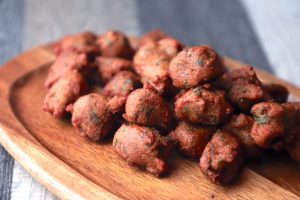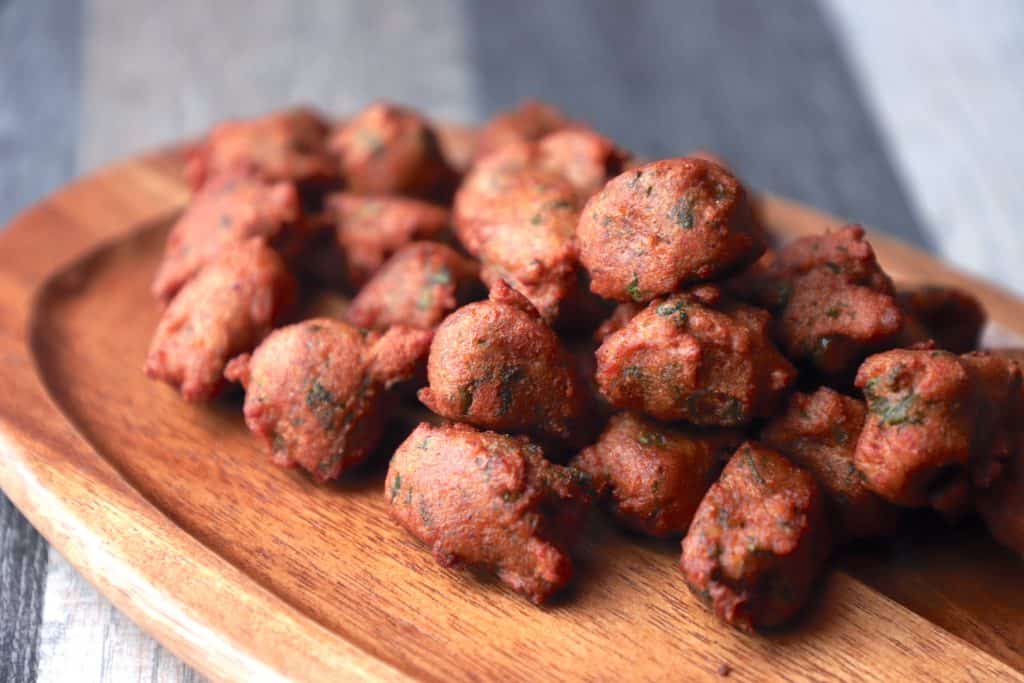Singhara Pakora –
So yet another pakora, well not quite probably you would have missed the twist “Singhara” in this pakora. Singhara is highly nutritious and very well known fruit in India, especially it’s very much use during fasting. If you are fasting, you may want to skip through this recipe and make one for you. Pakora is tasty so once you start having one, you probably will hardly stop, so listen to your stomach once, when you are finished with this recipe :).
Singhara pakora is prepared using Singhara flour and potato. These are some deep fried fritter and they tastes delicious. In India, people generally consume singhara pakora and dishes made by singhara flour during Navratri and fasting.
What is Singhara?
Singhara is aquatic fruit grown under water , it is also known as water chest nut, water caltrop. Because of its shape and colour, singhara also called as bat nut and black devil.
singhara can be consumed in three form raw singhara, boiled singhara and dried Singhara. Dried singhara used for making flour. For those who are gluten intolerant, this is also an option since singhara flour is gluten free and great replacement of all purpose flour for baking.
It is planted in month of June and grows from September till November. This fruit grows in fresh slowly running water, ponds, river and fresh water lakes mostly northern part of India. History of singhara goes back around 3000 year old and it is believed singhara originated in India.
India is know for its rich culture and history. Ayurveda and yoga are famous around the world. It is proven in ayurveda that singhara is having lots of benefits. During navratri some devotees fast for whole period and they avoid having regular food such as wheat, legumes, lentils which are used by Indians in regular cooking. So during fast people generally consume Rajgir aata (amaranth flour), kuttu aata(buck wheat flour) and singhara flour(water chestnut flour) that completes their daily intake of nutrition needed by body as these flours are high in dietary fibres and nutritions.
Singhara is seasonal fruit, so to get the full benefits of any fruits it is important to eat it during it’s season. Seasonal fruits are best to have during season as they haven’t been processed and it also supports local farmers. Season fruits prevents us from many diseases also .The main reason behind having Singhara flour during Navratri is to prepare our body for natural atmospheric changes, weather shift from fall to winter or something else, so having these flour and fruits helps us to balance our body during changes.
Benefits of Singhara and Singhara flour –
This winter season fruit is very beneficial for our body, singhara is very nutritious and rich in vitamins. Singhara flour is Less in calories and fat, high in potassium, Low sodium. It has moderate amount of fiber and it is also rich in vitamin C, B6, zinc, iron, phosphorous, calcium, magnesium and iodine.
- Singhara flour is high in antioxidant. Drinking with milk can help to relieve cough.
- Consumption of singhara during last trimesters of pregnancy, in moderate amount can be beneficial for pregnant lady and provides nutrition to mother and baby.
- Singhara contains good amount of iodine and helps in proper functioning of thyroid gland.
- Its a winter fruit so it helps in water retention as because of cold weather we drink less water in winter, having singhara can help from dehydration during winter.
- It acts as a coolant. Singhara is good for treating acidity and indigestion.
- Singhara is a detoxifier and helps to remove impurities from our body so its good for skin and hair
- Singhara is gluten free flour.
- Singhara juice helps to cure Jaundice.
and so many..
Today I will be sharing recipe of Singhara pakora, these are deep fried fritters, and popular snack in north India especially during fast, pakora’s are made by mixing singhara flour, boiled potato and fast/vrat spices and fried in oil or ghee. You can enjoy this delicious pakoras as snacks and have them with hot tea and chutney.
Although any thing fried in oil and cooked in high heat can affect its nutrition content so if you are health conscious and want to have all health benefits of singhara flour, you can have singhara roti or paratha and cook it in less oil, also stir fried singhara tastes amazing.
I have also made some more recipes for vrat or fast specially for Navratri in my navratri recipe collection which includes recipes such as coconut barfi, khajur barfi, milk peda for dessert. And kuttu paratha, falahari chaat, sabudana khichadi and sabudana vada for savoury food.
Important Notes –
- Always cook pakoras on low heat, else they will be cooked from outside and uncooked from inside.
- Adding little bit of rajgir flour can give you extra crispness.
- Batter consistency also affect the crispness of pakora so don’t make it too thick or too runny.
- Anything consumed in excess amount can be harmful for body. Excess consumption of singhara can cause upset stomach, so always consume in moderate amount.
Watch Video –
Printable recipe –
Singhara Pakora Recipe step by step with photos –
1. Boil one medium size Potato.
2.Take a mixing bowl, add 1 cup singhara (water chestnut) flour, add cumin seed, chilli powder and rock salt. if you don’t consume chilli powder during fast skip it.
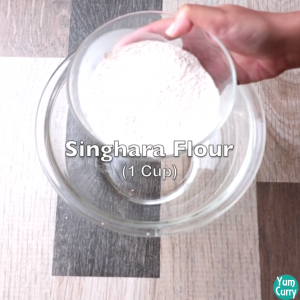
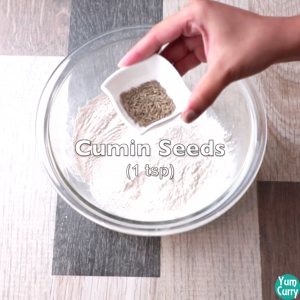
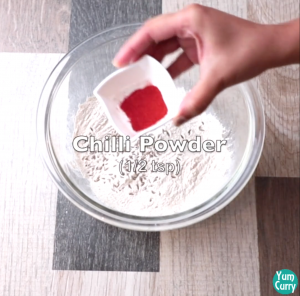
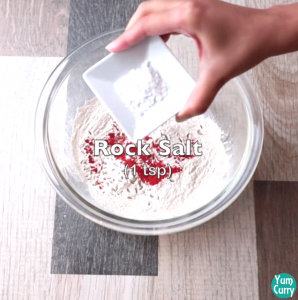 3. Now add finely chopped one green chilli and coriander leaves.
3. Now add finely chopped one green chilli and coriander leaves.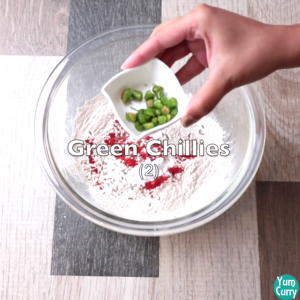
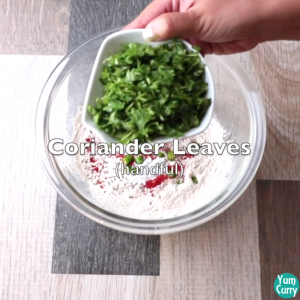 4. Add one medium size boiled peeled and mashed potato and mix all the ingredient well.
4. Add one medium size boiled peeled and mashed potato and mix all the ingredient well.
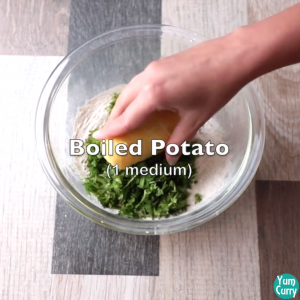 5. Add water as needed make a smooth paste, don’t make Pakora mixture too runny or too dry.
5. Add water as needed make a smooth paste, don’t make Pakora mixture too runny or too dry.
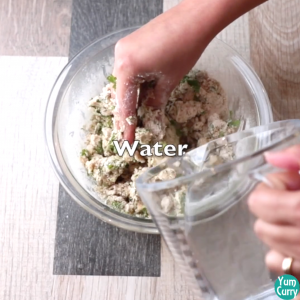 6. Take a Pan and heat oil. now take little bit mixture and drop in to oil if mixture come on surface oil is ready for frying.
6. Take a Pan and heat oil. now take little bit mixture and drop in to oil if mixture come on surface oil is ready for frying.
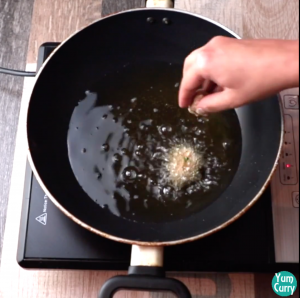 7. Now take small portion of mixture, add to hot oil, don’t put too many pakora in at a time.
7. Now take small portion of mixture, add to hot oil, don’t put too many pakora in at a time.
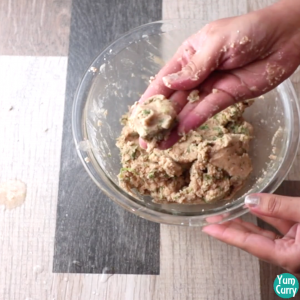
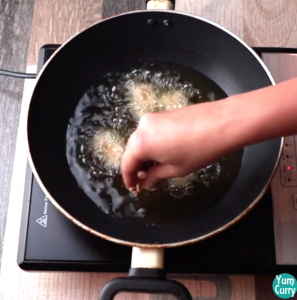 8. Fry in low- medium heat rotate regularly, until turn golden brown.
8. Fry in low- medium heat rotate regularly, until turn golden brown.
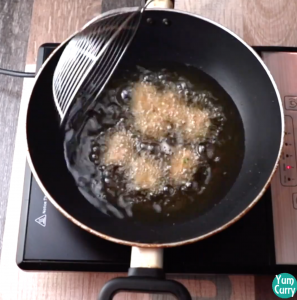 9. Take out pakora drain on paper napkin to remove excess oil.
9. Take out pakora drain on paper napkin to remove excess oil.
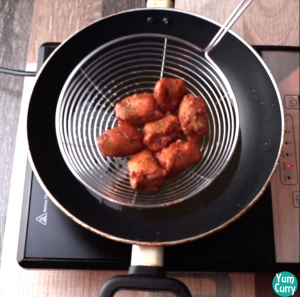 10. Pakora are ready. serve hot enjoy with chutney.
10. Pakora are ready. serve hot enjoy with chutney.
